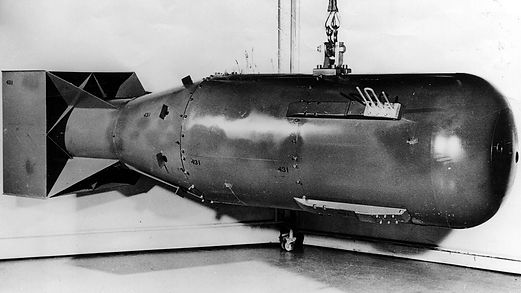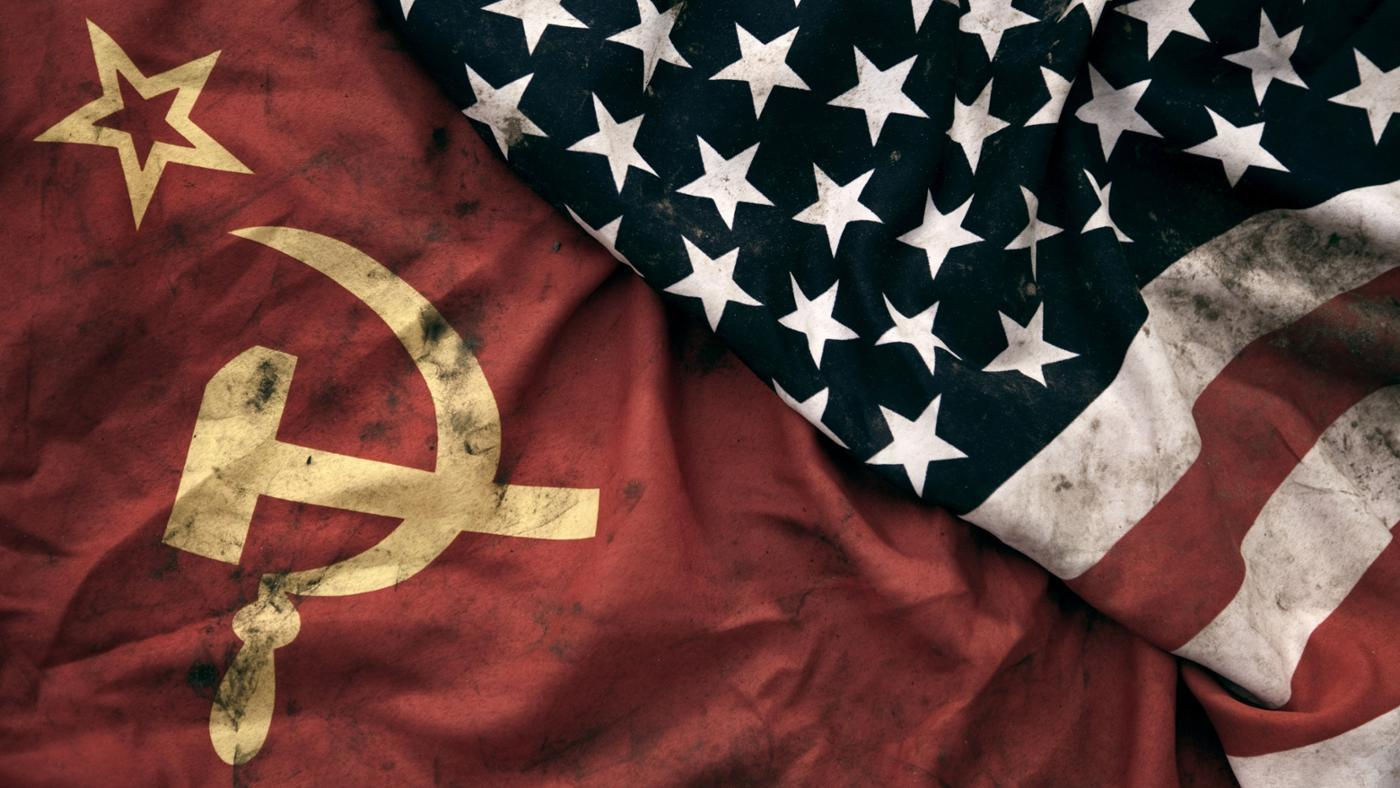
What was the Cold War?
The Cold War refers to a period of high tension between the Eastern Bloc and Western bloc, after WW2. The Eastern Bloc included The Soviet Union and the Warsaw Pact, while the Western Bloc included the United States, NATO and its other allies
The Cold War was also a clash of vastly different ideologies - Capitalism and Communism, each side defended and supported religiously. Both sides sought to establish dominance, as well as opportunities to expand their territories in the world.
Origins of The Cold War
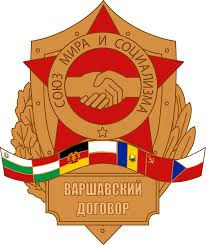

Shortly after Nazi Germany surrendered in May 1945, tensions began to arise between Great Britain and The United States, and the Soviet Union. One would think that since these 3 countries fought together in WW2, they would be on good terms. The reality was pretty much the opposite. The USA had always been wary about communism and Joseph Stalin's tyrannical rule of his own country, while the Soviets were not happy that the Americans did not recognize them as part of the international committee, and that they joined WW2 late, leading to high casualties from the Soviets.
By 1948 the Soviets had installed left-wing governments in the countries of eastern Europe that had been liberated by the Red Army. The Americans and the British feared USSR plans to conquer the world, as well as the spread of communism. Meanwhile, the USSR was wary of they perceived as American officials’ initiating arms buildup and their interventionist approach to international relations. They were also determined to maintain control of eastern Europe as they were paranoid about any renewed threats from Germany and they wanted to spread communism worldwide.
The Cold War had solidified by 1947–48, when U.S. aid provided under the Marshall Plan to western Europe had brought those countries under American influence and the Soviets had installed openly communist regimes in eastern Europe.
Strategies used by both sides
THE COLD WAR: CONTAINMENT
By the time World War II ended, most American officials agreed that the best defense against the Soviet threat was a strategy called “containment.” This is a long-term and firm vigilant containment of Russia Expansive tendencies. This was to ensure that the USSR and its ideologies do not spread out of control, while also avoiding all-out war.
Atomic Bombs and Arms Race
On July 16, 1945, The United States successfully created the world's first atomic bomb. The bomb was then later tested at Alamogordo, New Mexico.
The USA had not only hoped that the atomic bomb would bring a quick end to WW2 but also hoped that by monopolizing it, it would allow the US control of foreign policy.
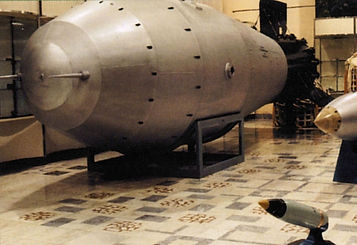
Tsar Bomba, the largest ever detonated warhead
On August 29th, 1949, the Soviet Union detonated its first atomic bomb, at the Semipalatinsk Test Site in Kazakhstan. This event ends America's monopoly of atomic weaponry In the 1950's, The Arms Race became the focus of the Cold War. America tested the first Hydrogen (or thermo-nuclear) bomb in 1952, beating the Russians in the creation of the "Super Bomb".
The political climate of the Cold war became more defined in January 1954, when U.S. Secretary of State John Foster Dulles announced the policy that came to be known as "massive retaliation" -- any major Soviet attack would be met with a massive nuclear response.
As a result of the challenge of "massive retaliation" came the most significant by-product of the Cold War, the Intercontinental Ballistic Missile (ICBM).
The ICBM's were supported with the thermo-nuclear bomb, or hydrogen bomb, that were much more destructive than atomic bombs. They were fitted with inertial guidance systems and powerful booster engines for multistage rockets. As a result, ballistic missiles became sufficiently accurate and powerful to destroy targets 8000 km (5000 mi) away. For more than thirty years, the ICBM has been the symbol of the United States' strategic nuclear arsenal.
In October 1961, The Soviet Union detonates a nuclear device, estimated at 58 megatons, the equivalent of more than 50 million tons of TNT, or more than all the explosives used during World War II. It is the largest nuclear weapon the world had ever seen at that time. The Tsar Bomba (King of the Bombs) is detonated after US and USSR agree to limit nuclear testing. It is the largest nuclear device ever exploded. Having no strategic military value, Tsar is viewed as an act of intimidation by the Soviets.
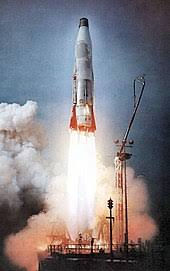
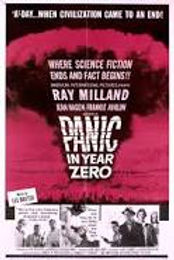
The USSR's successful development of a rocket that could deliver a payload over long distances meant that the Soviets can also initiate an immediate "massive retaliation" should the US provoke them.
This meant that both superpowers had the threat of a mutually assured destruction hanging over their heads - should one leader choose to attack, they face the risk of a retaliation. At one point, both superpowers had enough warheads that could destroy the earth multiple times over.
As a result, nations from both sides try to abstain from the use of nuclear weapons, falling back to it only as a last resort weapon. The fear of an apocalyptic doomsday scenario affected the lifestyles of civilians in the 1950s and 1960s. People built bomb shelters in their backyards. They practiced attack drills in schools and other public places. The 1950s and 1960s saw an epidemic of popular films that horrified moviegoers with depictions of nuclear devastation and mutant creatures. In these and other ways, the Cold War was a constant presence in Americans’ everyday lives.
The Cold War in space
Space exploration served as another dramatic arena for Cold War competition. On October 4, 1957, a Soviet R-7 intercontinental ballistic missile launched Sputnik (Russian for “traveler”), the world’s first artificial satellite and the first man-made object to be placed into the Earth’s orbit. Sputnik’s launch came as a surprise, and not a pleasant one, to most Americans. In the United States, space was seen as the next frontier, a logical extension of the grand American tradition of exploration, and it was crucial not to lose too much ground to the Soviets. In addition, this demonstration of the overwhelming power of the R-7 missile–seemingly capable of delivering a nuclear warhead into U.S. air space–made gathering intelligence about Soviet military activities particularly urgent. I
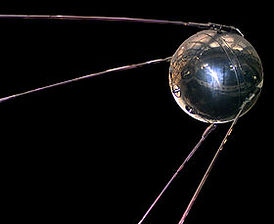
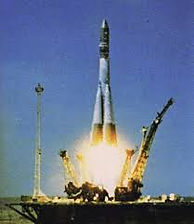
R7 Rocket Replica of Sputnik
In 1958, the U.S. launched its own satellite, Explorer I, designed by the U.S. Army under the direction of rocket scientist Wernher von Braun, and what came to be known as the Space Race was underway. That same year, President Dwight Eisenhower signed a public order creating the National Aeronautics and Space Administration (NASA), a federal agency dedicated to space exploration, as well as several programs seeking to exploit the military potential of space. Still, the Soviets were one step ahead, launching the first man into space in April 1961.
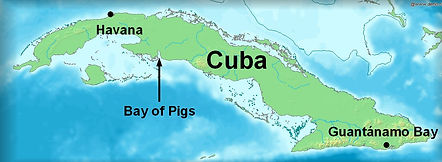
hat May, after Alan Shepard become the first American man in space, President John F. Kennedy (1917-1963) made the bold public claim that the U.S. would land a man on the moon by the end of the decade. His prediction came true on July 20, 1969, when Neil Armstrong of NASA’s Apollo 11 mission, became the first man to set food on the moon, effectively winning the Space Race for the Americans. U.S. astronauts came to be seen as the ultimate American heroes, and earth-bound men and women seemed to enjoy living vicariously through them. Soviets, in turn, were pictured as the ultimate villains, with their massive, relentless efforts to surpass America and prove the power of the communist system.
THE COLD WAR ABROAD
In June 1950, the first open conflict of the Cold War began. Known as the Korean War, it was waged between Soviet-backed North Korean People's Army and its pro-western neighbor, South Korea. The war ended in a stalemate in 1953, but only as an armistice - the war was never officially ended, even today.
In the following decade, the United States faced other problems closer to home. One of them was the Bay of Pigs invasion in 1961. It was a failed military invasion of Cuba undertaken by a counter-revolutionary military group made up of Cuban exiles, which was sponsored by the Central Intelligence Agency(CIA). The Democratic Revolutionary Front was intended to overthrow the increasingly communist government of Fidel Castro. The forces were defeated within 3 days of the invasion.
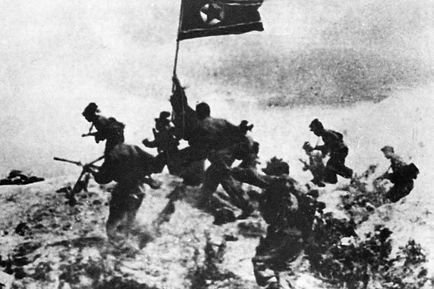
North Korean troops in action during the Korean War.
In 1962, the US was faced with the Cuban Missle Crisis, and later that decade, American troops were once again dragged into another bloody war.
The Vietnam War was caused by the collapse of the French Colonial Regime. This led to a struggle between American backed nationalist Ngo Dinh Diem in the south and the communist Ho Chi Minh in the north. As many as 2 million civilians on both sides and some 1.1 million North Vietnamese and Viet Cong fighters died. The U.S. military has estimated that between 200,000 and 250,000 South Vietnamese soldiers died in the war. In 1982 the Vietnam Veterans Memorial was dedicated in Washington, D.C., inscribed with the names of 57,939 members of U.S. armed forces who had died or were missing as a result of the war.
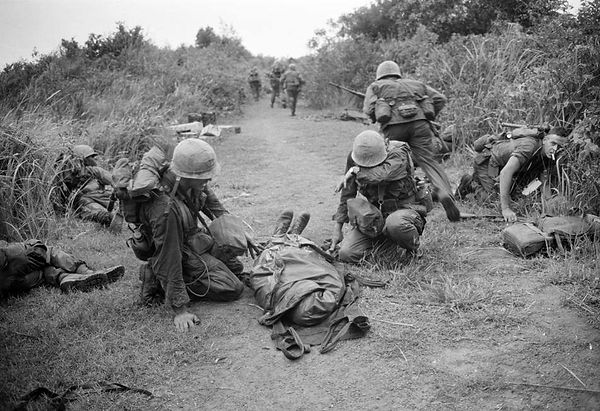
American casualties in the Vietnam War
End of the Cold War
When President Richard Nixon took office, he began to implement a new approach to international relations. He realized the importance of using diplomacy rather than military action to sort out relations.
He started by encouraging United Nations to recognize the communist Chinese government and began to establish diplomatic relations with Beijing
At the same time, he adopted a policy of “détente”–”relaxation”–toward the Soviet Union. In 1972, he and Soviet premier Leonid Brezhnev signed the Strategic Arms Limitation Treaty, which prohibited the manufacture of nuclear missiles by both sides and took a step toward reducing the decades-old threat of nuclear war.
Despite President Nixon's efforts, tensions began to rise again when President Ronald Reagan. He believed that the spread of communism anywhere threatened freedom everywhere. As a result, he worked to provide financial and military aid to anticommunist governments and insurgencies around the world. This was known as the Reagan Doctrine.
Even as Reagan fought communism in Central America, however, the Soviet Union was disintegrating. In response to severe economic problems and growing political ferment in the USSR, Premier Mikhail Gorbachev took office in 1985 and introduced two policies that redefined Russia’s relationship to the rest of the world: “glasnost,” or political openness, and “perestroika,” or economic reform. Soviet influence in Eastern Europe waned. In 1989, every other communist state in the region replaced its government with a noncommunist one. In November of that year, the Berlin Wall–the most visible symbol of the decades-long Cold War–was finally destroyed, just over two years after Reagan had challenged the Soviet premier in a speech at Brandenburg Gate in Berlin: “Mr. Gorbachev, tear down this wall.” By 1991, the Soviet Union itself had fallen apart. The Cold War was over.
Technology and weapons used - from 1945 to 1990
The end of WW2 brought along an entire wave of unprecedented technology, weapons, and tactics. Lessons learned from the Second World War meant that new weapons are improved and better in almost every way. Technology savaged from the remnants of Nazi Germany, as well as other breakthroughs from other Allied Nations, helped paved way to fighter aircraft that could fly higher and faster than their propeller predecessors. The birth of weapon guidance systems led to a certain period of time where it was thought aerial dogfights will never take place again. New tank designs meant that they are faster and better protected than before. Meanwhile, the arms race between the USSR and USA led to an entirely new breed of weapons of mass destruction.
The Jet age
With scientific breakthroughs in jet propulsion, planes are flying faster and higher than ever before. The first ever operational jets were the German Me 262, powered by the junkers jumo 004. After the surrender of Nazi Germany and the acquisition of this technology by both the allies and the Soviets, both of them pioneered their own jet engines that would bring planes past the sound barrier.
All jet engines have an air intake through which air enters. This air is burnt in the combustion chamber with fuel and the hot exhaust gas comes out of a nozzle, forming jet thrust.
Early jet engines were separated into 2 types - the centrifugal jet engine and the axial flow jet engine. Axial flow compressors move the air into ever smaller spaces using a series of axial compressor fans. Centrifugal compressors take the air and force it outward away from the center to achieve compression.
Therefore the overall flow for axial flow engines is in a straight line, whereas the airflow through centrifugal engines changes directions through each stage.
As the USA and Soviet Union continued to develop their jet technology, this will be put into combat use in the first time during the Korean War, where American F-86 Sabres would go toe to toe with Soviet Mig 15s.
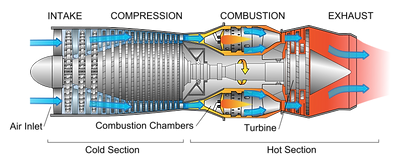
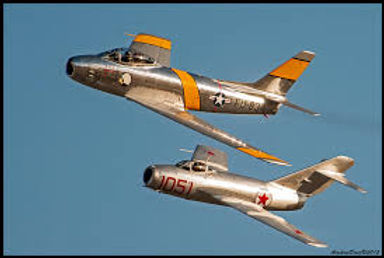
A F 86 sabre flying in formation with a MIG15
Supersonic jet bombers
In the earlier parts of the Cold War, much emphasis was placed on supersonic jet bombers as they were the most viable option to deliver a payload - nuclear or not. These bombers were also known as strategic bombers. These were the days before Surface to Air Missiles were developed and the only reliable way to take down a supersonic bomber was with another plane. Hence there was a high chance a bomber was able to get into enemy territory, deliver its payload and get out un-harrassed.
Hence this led to a time where both superpowers were focused on building the fastest jets, rather than building the best rockets, as rocket technology then was not reliable. It was also cheaper to build supersonic jet bombers.
An example was the American B 52 Stratofortress. For a time, some squadrons of these bombers were kept in the air around the clock, orbiting some distance away from their fail-safe points near the Soviet border, in case of a need of a quick reaction.
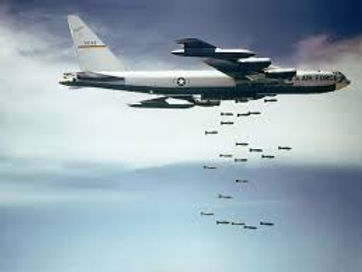
B-52 Stratofortress dropping its payload
The development of supersonic jet bombers led to the development of supersonic interceptors. These fighters were designed for one sole purpose - Speed. Their only role was to get up to altitude fast and to have a high top speed so that they can intercept any threat that may have penetrated their air defenses and are now in their airspace. The fastest of all is the Soviet Mig 25, with an operational top speed of 2.83, which is over 2000mph! (Mach 3.2 is possible but at risk of significant damage to the engines). It possesses 4 air to air missiles and a powerful radar.
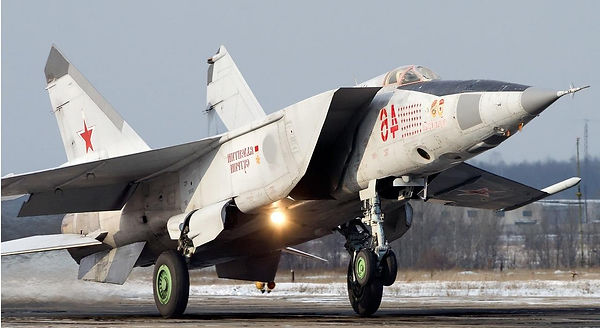
Rocket technology
Intercontinental ballistic missile
ICBM, in full intercontinental ballistic missile, Land-based, nuclear-armed ballistic missile with a range of more than 3,500 miles (5,600 km). Only the United States, Russia, and China field land-based missiles of this range. The first ICBMs were deployed by the Soviet Union in 1958; the United States followed the next year and China some 20 years later. The principal U.S. ICBM is the silo-launched Minuteman missile. Submarine-launched ballistic missiles (SLBMs) with ranges comparable to ICBMs include the Trident missile, deployed by the United States and Britain, and several systems deployed by Russia, China, and France.
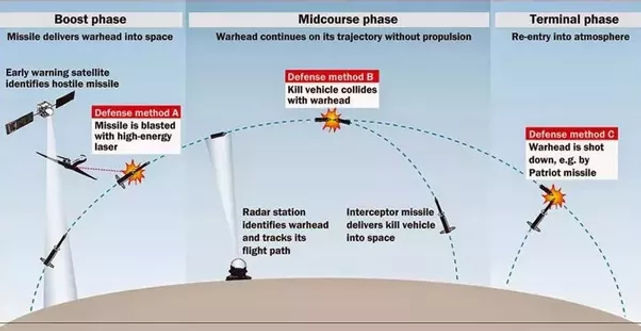
Digram showing how ICBMs can be intercepted
The world's first ICBM is the R7, developed by the Soviets. Its first successful flight took place on 21 August 1957; the R-7 flew over 6,000 km (3,700 mi). Later on, the R7 will be the rocket that launches the first ever artificial satellite into space.
An ICBM's flight phase can be separated into smaller phases: The boot phase, midcourse phase, and reentry phase. The boot phase is the phase where the rocket is propelled to an altitude of about 150km to 400km. This phase takes about 3 to 5 minutes, and solid-fuel rockets take a shorter time compared to liquid propellant rockets.
The second phase is the midcourse phase, which mostly consists of sub-orbital spaceflight. This phase takes about 25 minutes.
The last phase is the reentry phase, starting at an altitude of about 100km. The warhead will usually impact at about 1km/s.
ICBMs usually use the trajectory which optimizes range for a given amount of payload (the minimum-energy trajectory); an alternative is a depressed trajectory, which allows less payload, shorter flight time, and has a much lower apogee.
Some of the ICBMs used by both superpowers include the DF 5 and the LGM 30 Minuteman
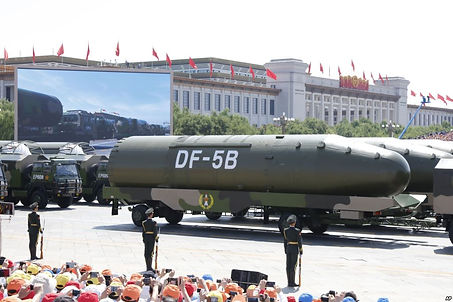
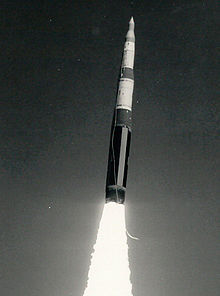
LGM 30 Minuteman
DF 5
Alas, the development of ICBMs meant that bombers were no longer needed for the intercontinental deployment of nuclear warheads. Focus then shifted away from bombers to ICBMs. After all, it was preferred to send an unmanned weapon rather than to risk the life of several people just for the deployment of a weapon. An ICBM could also be sent on a moment's notice. Hence, ICBM's were preferred over bombers. Moreover, the development of Surface to Air Missiles(SAM), meant that a bomber's primary advantage - speed and altitude over other fighters was neglected.
Surface to Air Missiles(SAM) and Air to Air Missiles.
As probably noticed, the names of these 2 weapons are pretty much self-explanatory. Both of these weapons are either launched from the ground via a SAM launch site or a mobile vehicle, or via a fighter jet onto another fighter jet.
SAMs can be radar or infrared guided, fired from a ground position to intercept and destroy enemy aircraft or missiles. Surface-to-air missiles (SAMs) were developed to protect ground positions from hostile air attacks, specifically high-altitude bombers flying beyond the range of conventional antiaircraft artillery.
Air to air missiles can also be radar or infrared guided, this time launched from a flying platform such as a fighter jet, or even a bomber.
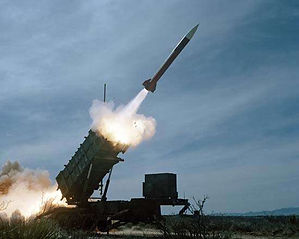
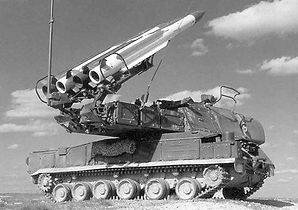
American Patriot Missle System
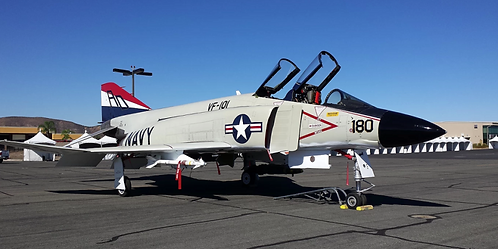
American F4 Phantom. Early variants were only armed with air to air missiles
9K37 BUK Soviet SAM
With the development of these missiles, air combat would never be the same again. It was once thought that close up aerial dogfights with cannons and machine guns would never happen again. All a pilot needs to do is to lock on his target and press a button.
However, this dream was short-lived, as American jets came against determined Vietnamese pilots pitting their outdated craft against them during the Vietnam war. This forced the American pilots into close-up dogfights, likened to those in WW2 and the Korean War. This was to prove disastrous as early Vietnam War American Jets were only armed with missiles.
Once these run out, they were a sitting duck.
Atomic technology
The atomic bomb, and nuclear bombs, are powerful weapons that use nuclear reactions as their source of explosive energy. Scientists first developed nuclear weapons technology during World War II. Atomic bombs have been used only twice in war—both times by the United States against Japan at the end of World War II. A period of nuclear proliferation followed that war, and during the Cold War, the United States and the Soviet Union vied for supremacy in a global nuclear arms race.
A discovery by nuclear physicists in a laboratory in Berlin, Germany, in 1938 made the first atomic bomb possible, after Otto Hahn, Lise Meitner and Fritz Strassman discovered nuclear fission.
When an atom of radioactive material splits into lighter atoms, there’s a sudden, powerful release of energy. The discovery of nuclear fission opened up the possibility of nuclear technologies, including weapons.
Atomic bombs are weapons that get their explosive energy from fission reactions. Thermonuclear weapons, or hydrogen bombs, rely on a combination of nuclear fission and nuclear fusion. Nuclear fusion is another type of reaction in which two lighter atoms combine to release energy.
The Manhattan Project was the code name for the American-led effort to develop a functional atomic bomb during World War II. The Manhattan Project was started in response to fears that German scientists had been working on a weapon using nuclear technology since the 1930s.
On December 28, 1942, President Franklin D. Roosevelt authorized the formation of the Manhattan Project to bring together various scientists and military officials working on nuclear research.
Much of the work was performed in Los Alamos, New Mexico, under the direction of theoretical physicist J. Robert Oppenheimer. On July 16, 1945, in a remote desert location near Alamogordo, New Mexico, the first atomic bomb was successfully detonated—the Trinity Test. It created an enormous mushroom cloud some 40,000 feet high and ushered in the Atomic Age.
The United States was the only country with nuclear weaponry in the years immediately following World War II. The Soviets initially lacked the knowledge and raw materials to build nuclear warheads.
Within just a few years, however, the U.S.S.R. had obtained—through a network of spies engaging in international espionage—blueprints of a fission-style bomb and discovered regional sources of uranium in Eastern Europe. On August 29, 1949, the Soviets tested their first nuclear bomb.
The United States responded by launching a program in 1950 to develop more advanced thermonuclear weapons. The Cold War arms race had begun, and nuclear testing and research became high-profile goals for several countries, especially the United States and the Soviet Union.
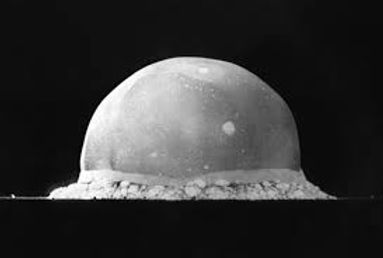
The trinity test
